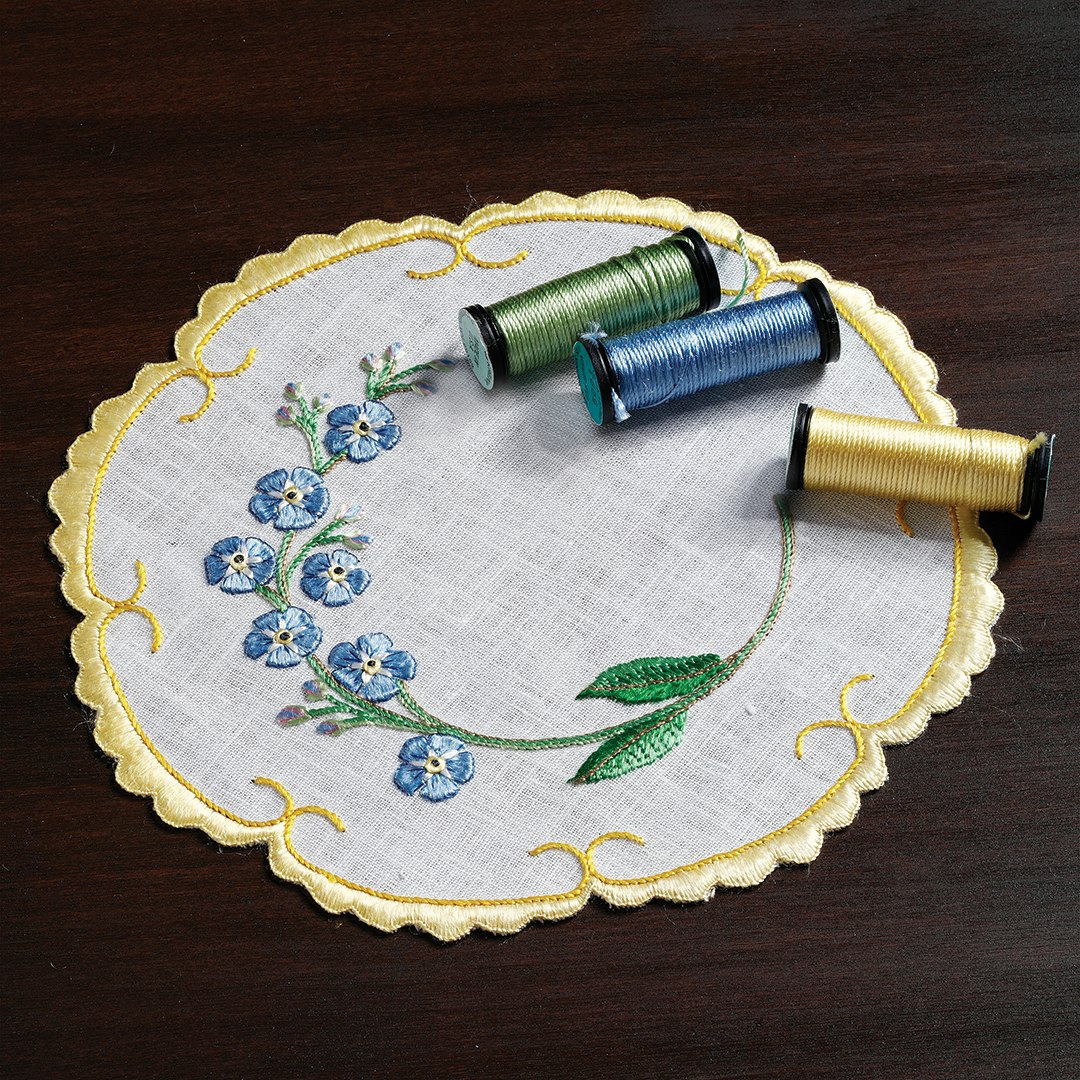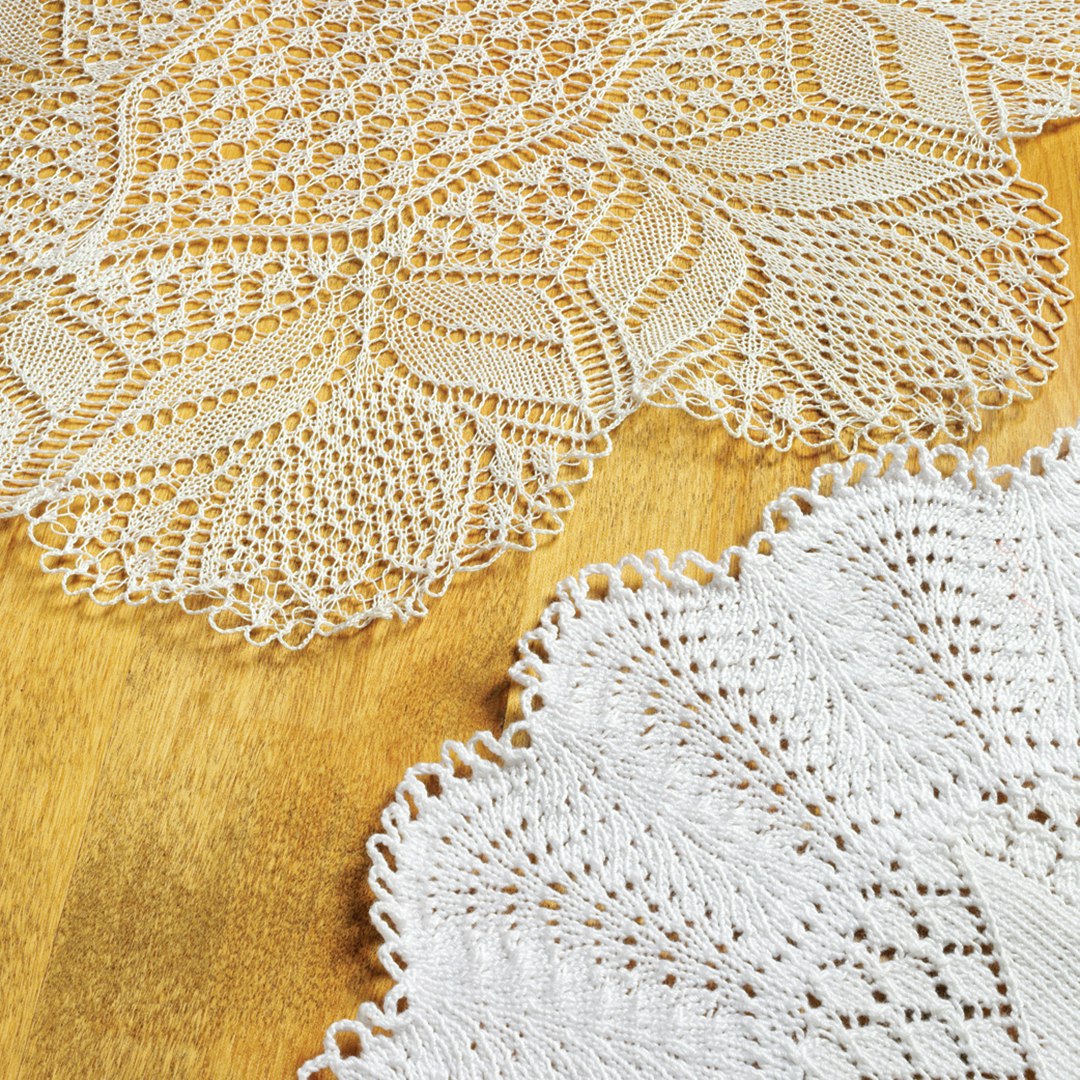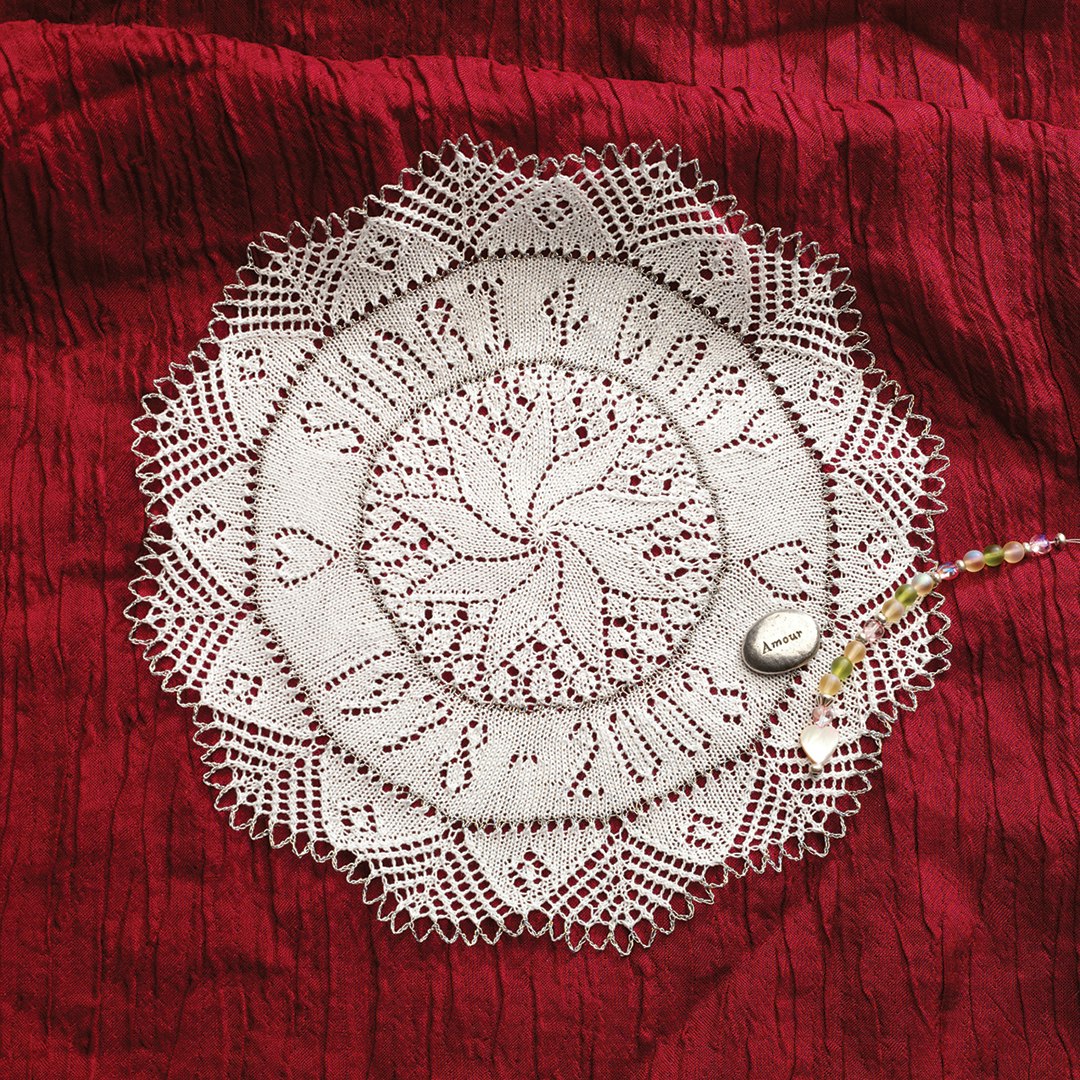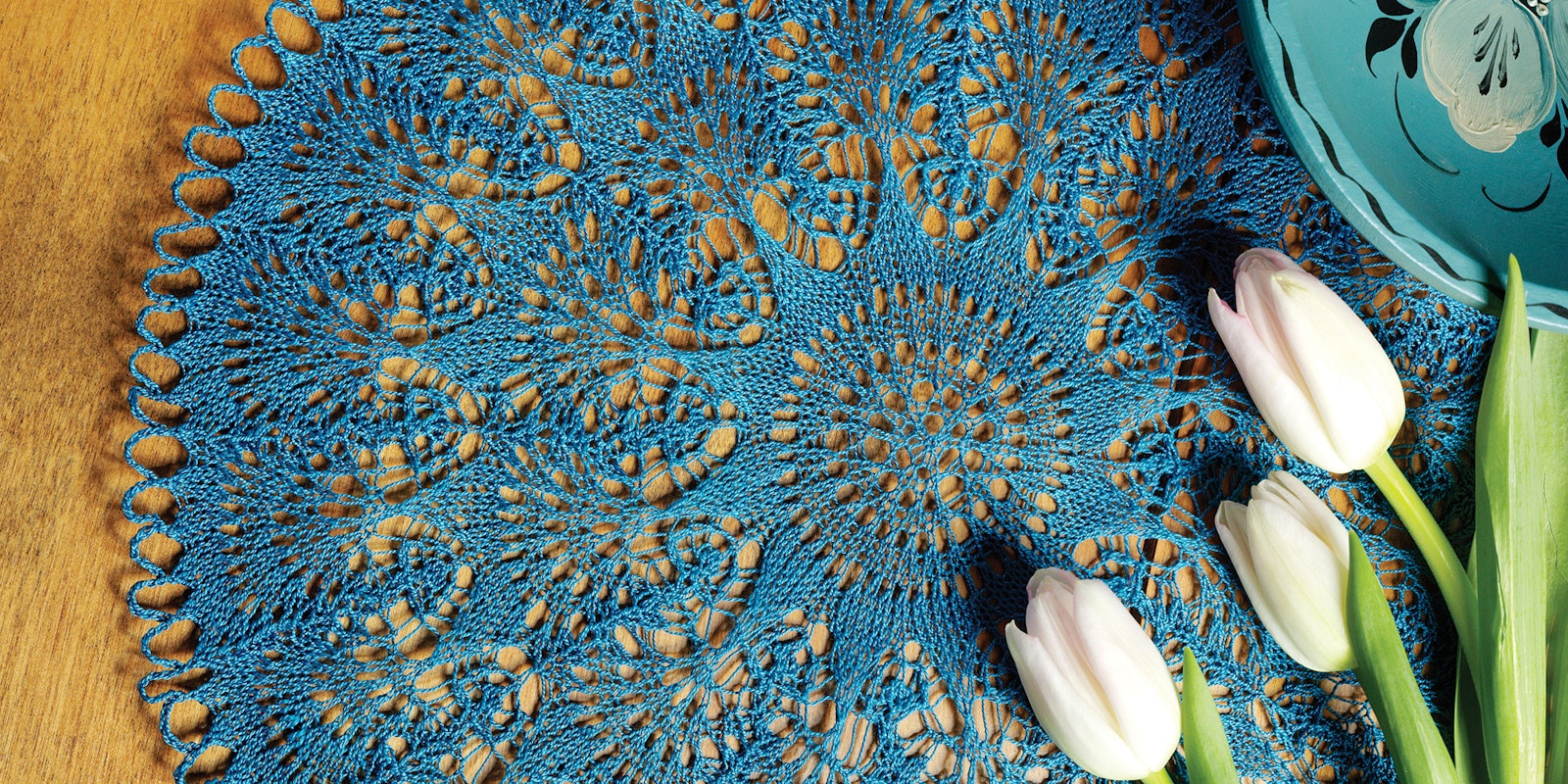A PieceWork article that clearly resonated with our readers was Beverly Gordon’s “The Push-Pull of Doilies: Revered, Reviled, and Reconceived” in the November/December 2017 issue. And yes, some readers love doilies, but some clearly do not. Regardless of your position, the doily has been at the center of home décor fashion for more than a century.
Some highlights from Beverly’s fascinating article follow.
- Unlike quilts and other large textiles that are typically treated as important heirlooms, doilies are generally thought of as impractical “dust-collectors” made by fussy old women who had little to do with their time. The stereotype is that doilies covered every surface in musty, overcrowded interiors; they have come to symbolize a premodern, unliberated time. Nevertheless, some individuals are deeply moved by these small pieces of cloth. They see the dignity and beauty of the makers’ lives, and they greet the objects as gifts from the past.
- Where did the term “doily” originate? Most sources credit it to an actual man, a sixteenth-century London cloth merchant named Doiley (sometimes spelled Doyley), who sold openwork textiles, probably bobbin lace. By 1711, his name became associated with the term “doily napkin,” and eventually the word “napkin” was dropped. A doily was originally a fancy napkin.
- Today, doilies appear to be making something of a comeback. Some people are creating them again, particularly in crochet. In 2011, Dover Press reissued vintage patterns in Old-Fashioned Doilies to Crochet. Leisure Arts has a series of books, including Mary Werst’s Extra-Special Doilies, Patricia Kristoffersen’s Absolutely Gorgeous Doilies, Kathlynn Glynn’s A Year of Doilies, Book 1, and . . . Doilies Updated . . . .
- For the last decade, commentators have begun to refer to a doily revival.
In addition to Beverly’s article, a companion project was included in the November/December 2017 issue of PieceWork. We asked designer Daniela Nii to create a doily with the popular pineapple motif.
PieceWork readers won’t be surprised to learn that the doily has figured in many issues. (Full transparency—the PieceWork staff is firmly in the “love doilies” category!) Over the years, we’ve included doilies worked in crochet, knitting, multiple forms of needlework, and tatting.
 Mary Polityka Bush worked this lovely doily in silk art embroidery. It was featured in the November/December 2016 issue. Photo by Joe Coca
Mary Polityka Bush worked this lovely doily in silk art embroidery. It was featured in the November/December 2016 issue. Photo by Joe Coca
The Queen’s Lace
And now back to Anna Marie Jensen and her Queen’s Lace pattern. As you can see from the photo above, the doily knitted from this pattern is exquisite. Ava T. Coleman became a passionate follower of Anna Marie Jensen’s lace knitting and shared information on her knitting and her life in the article “The Queen’s Lace” in the May/June 2011 issue of PieceWork. Here, you’ll learn how Anna Marie, born in Denmark in 1892, came to North America in 1919, became a registered nurse in Chicago, and in 1939, moved to Brush, Colorado, to work at Eben Ezer Lutheran Care Center. It was in Brush, that Anna Marie met Queen Ingrid of Denmark (1910–2000). Disney is definitely on to something—truly “It’s a Small World”!
 Doilies knitted by Ava T. Coleman, using Anna Marie Jensen’s patterns. Ingrid is at top and Judy at bottom. Photo by Joe Coca
Doilies knitted by Ava T. Coleman, using Anna Marie Jensen’s patterns. Ingrid is at top and Judy at bottom. Photo by Joe Coca
I want to share one more doily story with you before I close. The theme for the January/February 2004 issue was “Needlework Gift of Love.” Shown below is the simply stunning doily that reader Diane Willett designed and knitted as a 25th-wedding anniversary present for her older sister and her husband. The work is just exquisite.
 Shari and Gary Hoort’s anniversary doily designed and knitted by Diane Willett. Photo by Joe Coca
Shari and Gary Hoort’s anniversary doily designed and knitted by Diane Willett. Photo by Joe Coca
Doilies rule!
Also, remember that if you are an active subscriber to PieceWork magazine, you have unlimited access to previous issues, including the issues referenced here. See our help center for the step-by-step process on how to access them.
Jeane Hutchins is a former editor of PieceWork.
Originally published March 5, 2019; updated July 10, 2023.

